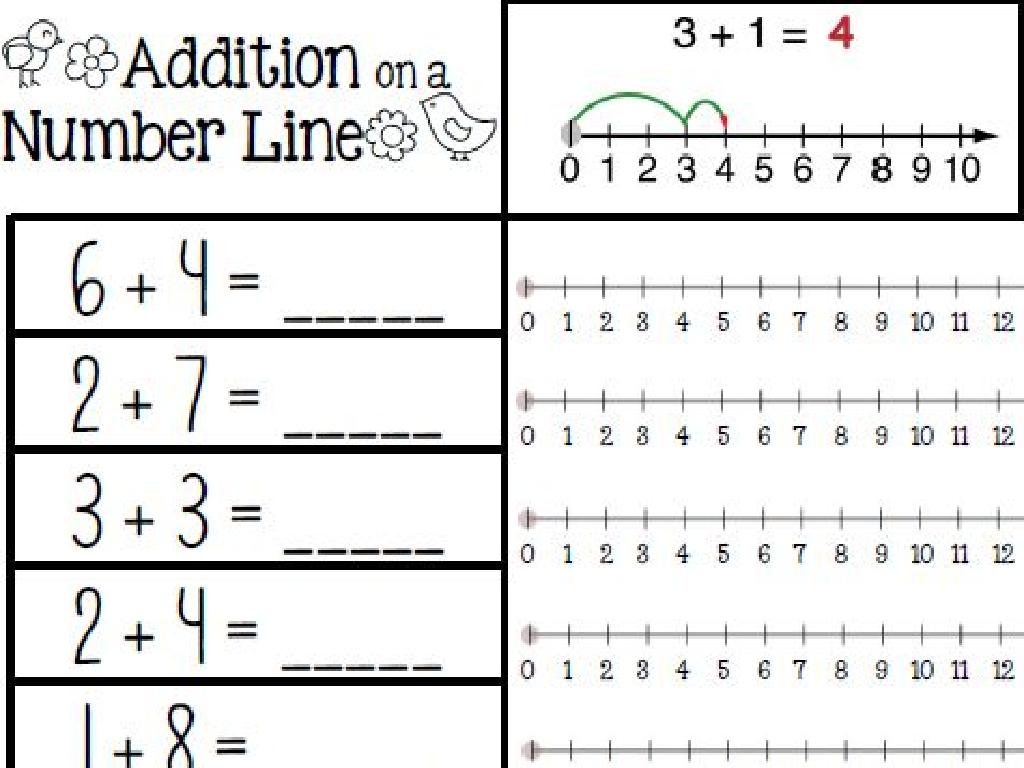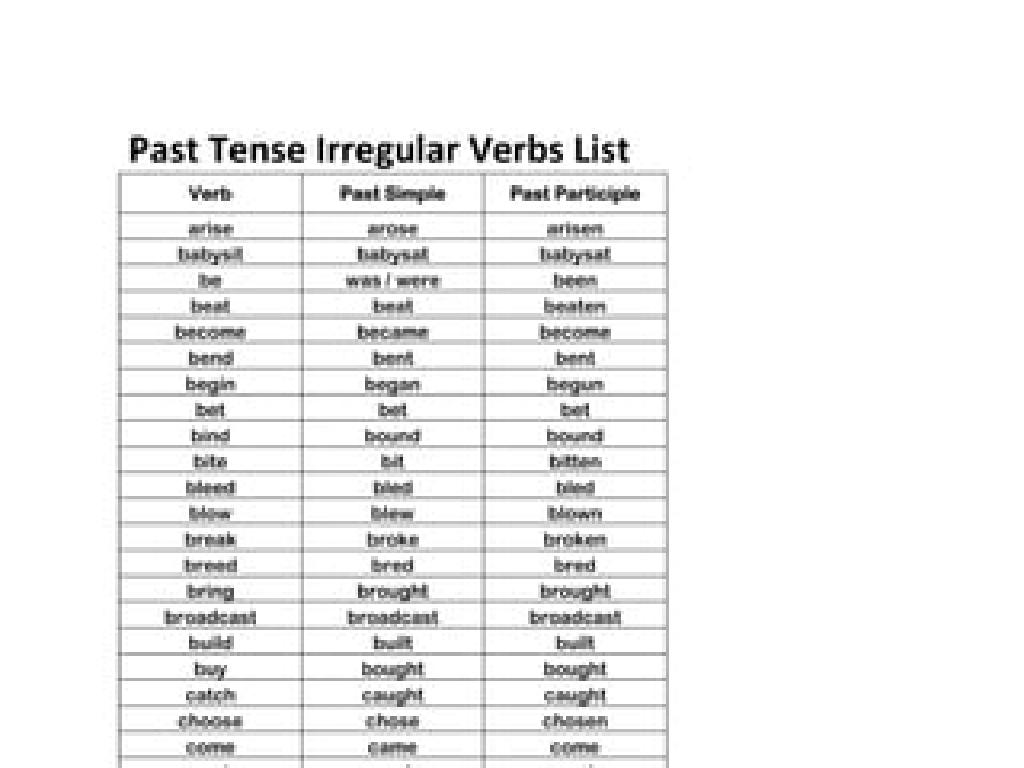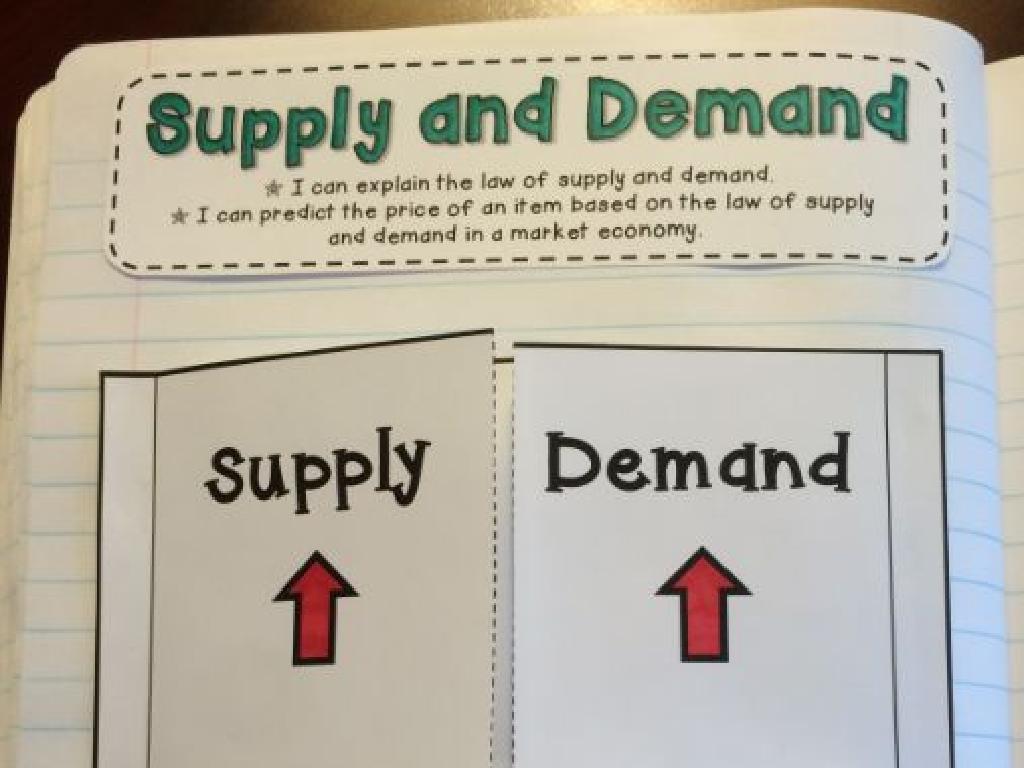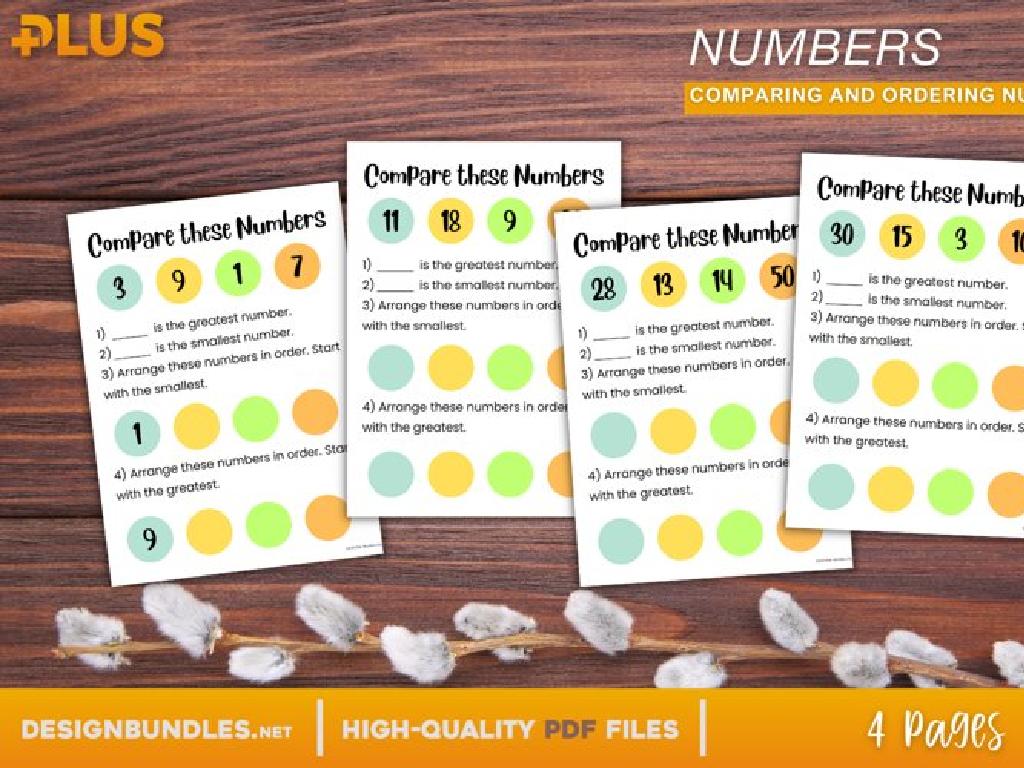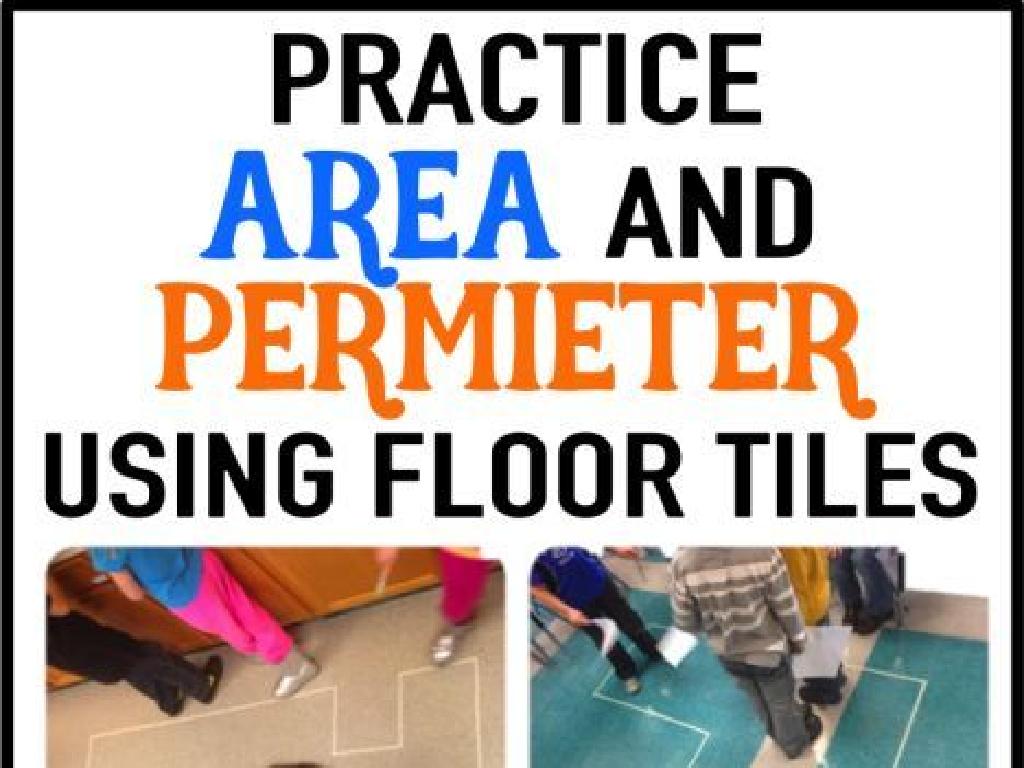Next To And Beside
Subject: Language arts
Grade: Pre-k
Topic: Location Words
Please LOG IN to download the presentation. Access is available to registered users only.
View More Content
Welcome to Location Words!
– Learning about location words
– Where are you sitting right now?
– Are you next to someone or alone?
– Location words in daily life
– Words like ‘above’, ‘below’, ‘next to’, ‘beside’
– Examples of ‘next to’ and ‘beside’
– ‘The cat is next to the box’ or ‘The book is beside the lamp’
|
This slide introduces the concept of location words to Pre-K students, aiming to make them aware of the words that describe positions. Start by engaging the students with a simple question about their own location in the classroom to make the learning personal and relatable. Explain that we use location words to tell where things are, which helps us communicate more clearly. Provide clear examples of ‘next to’ and ‘beside’ with objects that are familiar to them, like toys or classroom items. Encourage the children to use their hands or point to objects to describe where they are. This interactive approach will help them understand and remember these new vocabulary words.
Exploring Location Words: ‘Next to’ & ‘Beside’
– Location words show position
– They help us describe places
– ‘Next to’ means by the side of
– Example: The teddy bear is next to the pillow
– ‘Beside’ also means by the side
– Example: The cup is beside the plate on the table
|
Location words are essential in helping young learners describe where things are in relation to other objects. These words are foundational for spatial awareness and prepositions in language arts. Today, we focus on ‘next to’ and ‘beside’, which are used to indicate that one object is by the side of another. Use classroom objects to demonstrate these words in a tangible way. For instance, place a book next to a box and a pencil beside an eraser to visually show the meaning of these words. Encourage the children to use ‘next to’ and ‘beside’ in sentences and to find things in the classroom that are next to or beside other things.
Learning Location Words: ‘Next to’ and ‘Beside’
– ‘Next to’ means side by side
– ‘Beside’ is the same as ‘next to’
– Examples of ‘next to’ and ‘beside’
– A chair next to a table, a cup beside a plate
– Think of ‘next to’ or ‘beside’ examples
– Maybe your bed is next to a wall?
|
This slide introduces the location words ‘next to’ and ‘beside’ to Pre-k students, emphasizing their meaning and interchangeability. Start by explaining that ‘next to’ means one thing is right by the side of another. Show that ‘beside’ is just another word with the same meaning. Use classroom objects like a chair next to a table or a cup beside a plate as visual examples. Encourage the children to think of and share their own examples, such as items in their bedroom or toys that are next to each other. This will help them understand the concept of proximity and relation between objects in space.
Let’s Find Examples: Next to and Beside
– ‘Next to’ means close by
– Teddy bear next to a book
– On my desk, the teddy bear is right by the book
– Look for ‘next to’ in the classroom
– Find items in our room that are close to each other
– What’s ‘beside’ in your view?
– ‘Beside’ also means close by, can you spot anything?
|
This slide is designed to engage Pre-K students in a practical activity to understand the location words ‘next to’ and ‘beside’. Start by explaining that ‘next to’ means one thing is right by another thing. Show them the example of the teddy bear next to a book on your desk to visually illustrate the concept. Then, encourage the children to look around their own classroom environment to find and point out items that are ‘next to’ each other. Similarly, explain that ‘beside’ is another word for ‘next to’ and ask them to identify items that are ‘beside’ each other. This activity will help solidify their understanding of these location words through real-life examples. As a teacher, be prepared to walk around the classroom to assist students in identifying correct examples and to ensure they grasp the concept.
Story Time: Friends ‘Next to’ Each Other
– Read a story about friendship
– Listen for ‘next to’ and ‘beside’
– ‘Next to’ and ‘beside’ show where friends are sitting
– Understand friends’ positions
– Helps us picture where characters are in the story
– Discuss the location words used
|
This slide introduces a story-reading activity designed to teach Pre-k students about the location words ‘next to’ and ‘beside’. As you read the story aloud, emphasize these words and pause to discuss their meaning. Encourage the children to visualize the spatial relationship between the characters. After reading, engage the students in a discussion about how these words helped them understand the story better. Ask them to demonstrate ‘next to’ and ‘beside’ with objects or classmates to reinforce the concept. This interactive approach will help students grasp the practical use of location words in everyday language.
Activity Time: Musical Chairs
– Let’s play musical chairs!
– Find a chair ‘next to’ a friend
– ‘Next to’ means by the side of someone
– Use ‘beside’ to find a spot
– ‘Beside’ also means by the side of someone
– Tell us where you sat using location words
– Did you sit ‘next to’ or ‘beside’ your friend?
|
This activity is designed to help Pre-k students understand and use the location words ‘next to’ and ‘beside’ in a fun and interactive way. As the music plays, encourage the children to dance and move around. When the music stops, they should quickly find a chair that is ‘next to’ or ‘beside’ a friend. After everyone is seated, ask the students to describe their position using the location words. This reinforces the concept through practical application. For the teacher: Prepare the music and ensure there is one less chair than the number of students. Guide the children to use the words correctly, and make sure to praise their efforts to build confidence.
Review and Goodbye: Location Words
– Recap ‘next to’ and ‘beside’
– ‘Next to’ and ‘beside’ mean something is at the side of another thing.
– Locate your backpack using new words
– For example, ‘My backpack is next to the chair.’
– Practice telling your family
– Share with your family where things are at home using ‘next to’ and ‘beside’.
– You did a great job today!
|
As we wrap up today’s lesson, let’s review what ‘next to’ and ‘beside’ mean and how we can use these words to describe the location of objects. Encourage the children to think about where their backpack is in the classroom and describe its location using their new vocabulary. Praise their efforts and remind them to continue practicing at home by telling their family about their day and using ‘next to’ and ‘beside’ to describe where things are. This will help reinforce their understanding and application of these location words in everyday conversation.

